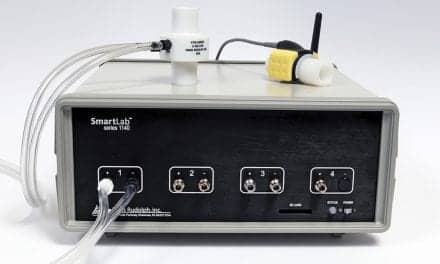As a journalist, I have always maintained that you do not publish a magazine in a vacuum. Since taking the position of senior editor of RT 6 months ago, I have spent countless hours talking and corresponding with members of our Editorial Advisory Board and readers of RT. However, I had yet to visit a respiratory department. That changed last month when I toured the respiratory care department at the University of California, at Los Angeles (UCLA) Medical Center, considered by many to be one of the finest respiratory departments in the country. I was able to experience the day-to-day activity in this environment. Seeing patients on ventilators first-hand enabled me to truly understand and appreciate all that is involved in the diagnosis and treatment of respiratory patients. I was able to witness many of the same activities that I spend so much time reading about.
What was originally scheduled to be a 1-hour visit turned into a 3-hour grand tour for myself and two other members of the RT staff. It soon became obvious that this was time well spent. We met with Valarie Dudley, MPA, RRT, director of respiratory care, and Patrick Tobin, RRT, educational director. Dudley teaches respiratory care at Santa Monica College, which was to our benefit as we had two teachers who were accustomed to explaining respiratory care in layman’s terms. They began the tour by talking to us about how this 40-year-old hospital’s seven intensive care units (ICUs) and several specialty units are run. They explained the rotation procedure, how ventilators are operated, and the multiple skills that RCPs must possess in order to work effectively in this fast-paced environment.
The first area we observed was where the ventilators are cleaned, inspected, and prepared for the next patient. We learned the procedures and how the different models work. It was fascinating to learn that technology has advanced so far that one ventilator model can be used on both adult patients and neonates.
In this same area, UCLA has recently implemented an in-house service for ventilators. Technicians are sent out to the various companies that provide the ventilators, and each company conducts a training program to certify these technicians in servicing and repairing the different models. This program has saved thousands of dollars for UCLA’s respiratory department.
We were then led to the medical ICU. The center of this area comprises a group of computers that will eventually take the place of patient charts. The computers are part of the patients’ monitoring system, which can be updated easily at any time. Tobin informed us that UCLA Medical Center is expanding and the respiratory care department and medical ICU will eventually be located across the street. Moving these departments to another location and redesigning them will enable these areas to run more efficiently.
Visiting the respiratory care department at UCLA was a humbling and educational experience. As I said before, it is one thing to read about ventilator-dependent patients with specific respiratory disorders, but it is quite a different experience to actually see these patients struggling for their next breath and to realize the crucial attention to detail that is involved in treating them. As we prepare our editorial agenda for the year 2000, I will use my trip to UCLA as a reminder of the important role that RT plays in helping to educate and inform respiratory care professionals. In addition, visiting respiratory care departments will become a regular part of my job duties.









